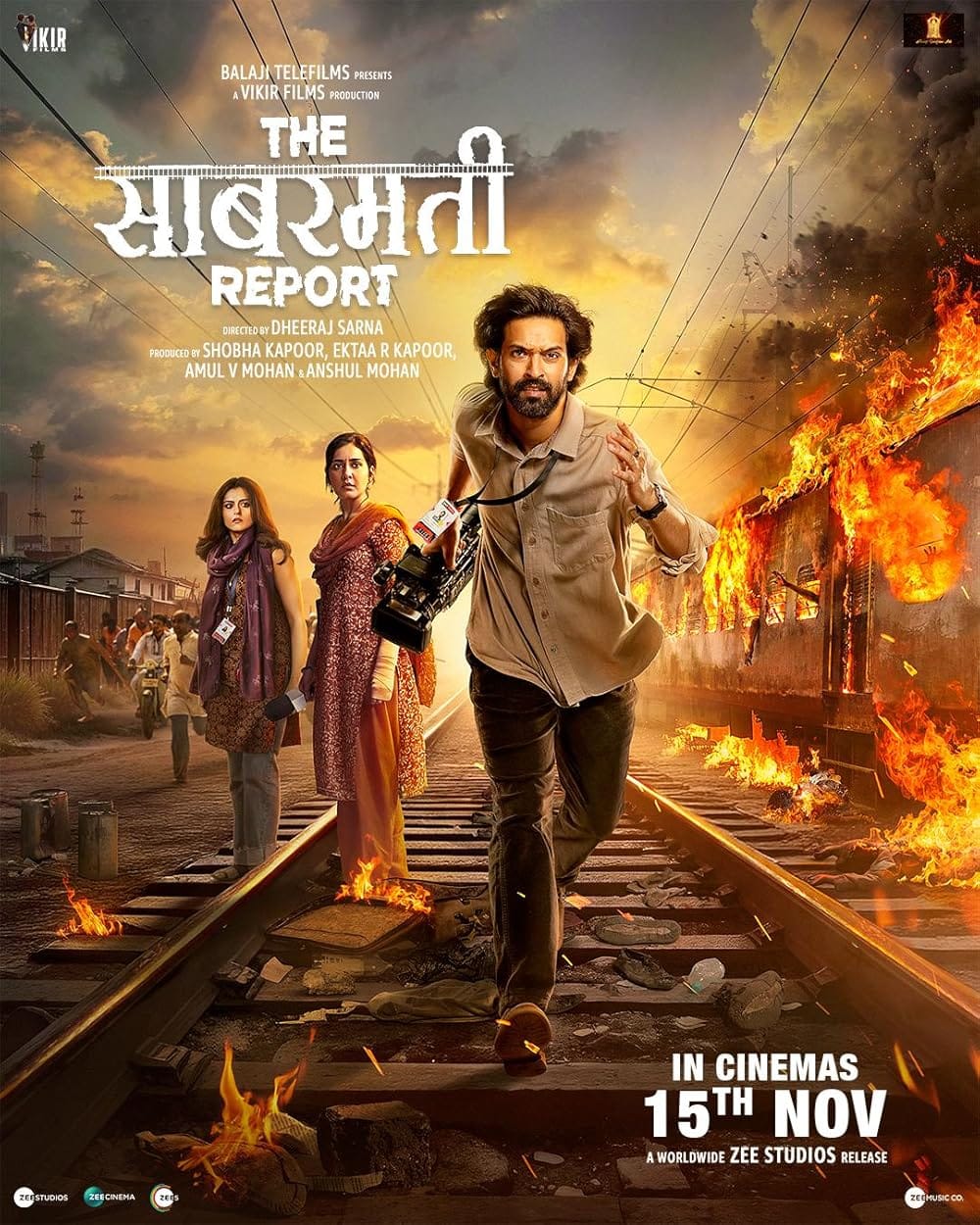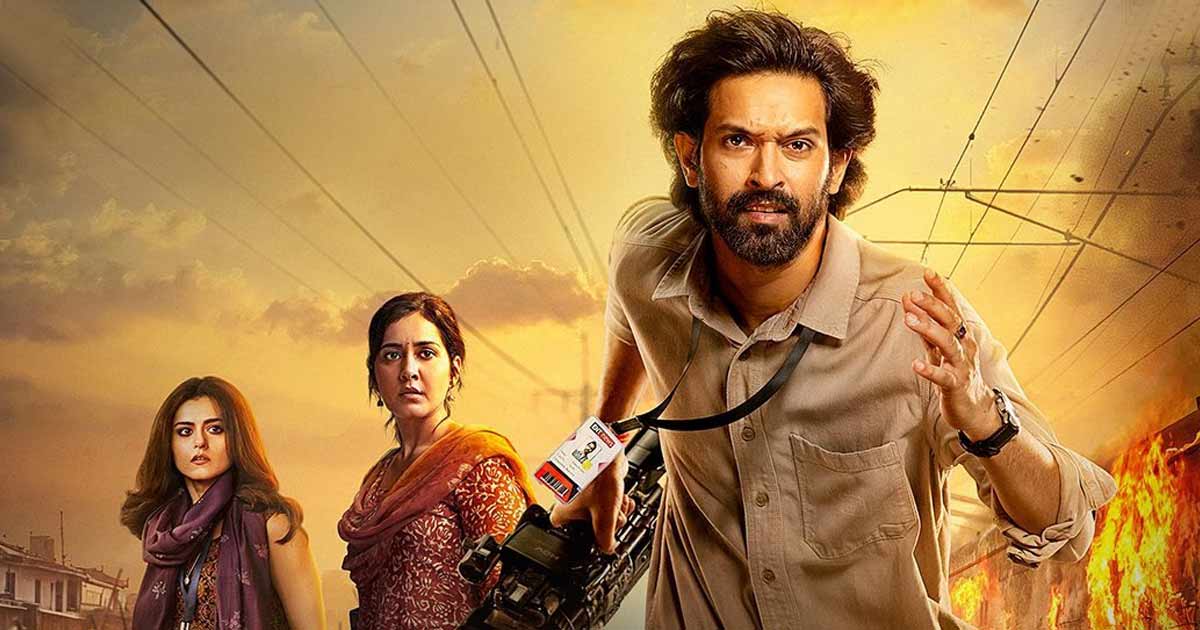The Sabarmati Report, written and directed by Dheeraj Sarna, is one of the few rare films that gets the formula to the ‘right’ mixture of good storytelling and narrative-building– a softer term for propaganda.
The death of over a thousand can do a lot to an artist. The Sabarmati Report is a film of that angst, that urge, that pain.
Around 2,996 were killed in the 9/11 Attacks in the United States of America. Around 174 were killed in the 26/11 Mumbai terrorist attacks. Do you know how many were killed in the Godhra pogrom? This is the exact line of rhetoric that Dheeraj Satna uses to make us attentive to “ignored” history. The emotional weight that the Godhra riots carry is insurmountable. The death of over a thousand can do a lot to an artist. The Sabarmati Report is a film of that angst, that urge, that pain.
A quick re-cap
Before watching any political film, it is essential to be aware of a bit of contemporary history so that we don’t get swayed by the agenda set by the filmmakers. So, a quick-look at the basic information that is publicly available is important.
In 2002, 27th February, The Sabarmati Express is returning back from Ayodhya to Ahmedabad. After the not-very-uncommon phenomenon of a 4-hour delay, the train halted at Godhra station, Gujarat. A quick brawl ignited the pre-mediated fire leading to the burning of a Karsevak-filled S6 coach–resulting in the death of 58; majority of them were Hindus–claims a sect. A technical failure led to the fire, another sect claims. In the violence that followed for next three days extending upto three months, over a thousand were murdered and went missing–the majority of them were muslims.
The 2004’s one-member panel instituted by the Indian Ministry of Railways concluded that it was a technical failure. However, The Nanavati-Mehta commission appointed by Gujarat state government concluded that the attack was a premeditated arsoning by around a thousand Muslim men. In 2011, a trial court convicted 11 men for the death sentence and 20 members to a lifetime of imprisonment and acquitted 63 members.
In 2022, the Supreme Court of India approved the Special Investigation Team’s (SIT) clean chit given to then Gujarat’s Chief Minister and present three-time Prime Minister Narendra Modi for the allegations of turning a blind-eye to the Hindus involved in state-wide riots, rapes and murders that followed in the next three months.
The Sabarmati Report: a stellar performance
Vikrant Massey has aced the role of a Hindi Patrkaar (Reporter). He plays Samar Kumar, a lost Hindi-speaking journalist in the world of anglicised foreign funded media. EBT Media is the boot-licker of politicians whoever has the power. The premise of an honest Hindi-speaking journalist’s “truth” being crushed down by anglicised sold-out media and then him starting a secret investigation with the aid of Amritha, a fellow newbie journalist played by Rashi Khanna, is an excellent showcase of narrative story telling, using journalism to revisit the trauma and to retell the “truth”.
Riddhi Dogra as Manika Raj Purohit is astounding. Her affirmative confidence edging with the arrogance of a high-reputed TV journalist is an absolute show to watch in the blitz and glitz of the media world.
Everyone has rocked their performance in this gripping thriller. Riddhi Dogra as Manika Raj Purohit is astounding. Her affirmative confidence edging with the arrogance of a high-reputed TV journalist is an absolute show to watch in the blitz and glitz of the media world. Rashi Khanna is also equally good with her decent performance. But, Vikrant is a show stealer. His character’s down-fall into drunkenness and the spine-straight, never-fear attitude of Samar gives the feel and power of the angry young man once again.
The cinematography by Amalendu Chaudhary is simple and effective. It doesn’t do gimmicks that take your valuable attention out of the grippy writing, adding another layer of reality. The layer of reality is subtly placed in the shocker transition from reel-events to real-events shot by journalists during the 2002 Godhra pogrom. The match-cuts shot by the duo and the edits done by Manan Sagar are an important transition reminding you once again that the Godhra disaster is not tiny by any stretch of imagination.
Propaganda done “right”?
There will always be a thin-line that differentiates honest truth from propaganda. The Sabarmati Report has it all that doesn’t make it a propaganda film, yet it can eventually fall into a jingoistic narrative because it serves the status quo. The Sabarmati Report treats the 2017’s return of the NDA government led by BJP under Modi with reverence. Its reverential treatment of status quo quasi-jingoistically makes us wonder whether the loyalty is towards the “truth” or the current regime.
The clever writing of writers duo Arjun Bhandegaonkar and Avinash Singh Tomar positioning “right-wing” ideologies without polarising minority communities is a sensible non-aggressive artistic choice. It must be appreciated in the era when polarisation has more rewards to offer than neutralisation with nuance.
However, The Sabarmati Report is not guilty of gaze. When the Godhra case is reopened by EBT Media after 5 years, with Amritha (Rashi Khanna) leading the case, they visit a Muslim dominated area and you see the whole community cheering for Pakistan when India was on the edge of losing. ‘Yaha aisa hi hota hai‘, says Samar, passing a stereotypical image of Muslims who celebrate the victory of Pakistan, especially over India.
This is why the propaganda feels done right- because such scenes give a feel of neutrality, which is absolutely fine, if not needed.
As they are hounded by Muslim goons, they both see children celebrating the victory of India in 2007’s World Cup Cricket. You hear the voice-over of Samar preaching about the future generation in a condescending way. He concludes that there are only a few bad apples maligning the whole bunch. This is why the propaganda feels done right- because such scenes give a feel of neutrality, which is absolutely fine, if not needed.
There is a feeling of Hindus being victims, but there is no blatant dehumanisation of Muslims that we often saw in other propaganda films, the recent examples being the Telugu film Razakar: Silent Genocide of Hyderabad, and The Kerala Story where the villainisation of a certain minority community is blatantly obvious and misrepresenting. The differentiator of The Sabarmati Report with other propaganda films is its patronising of certain good parts of the Muslim community and essentially concluding that there are only a few “bad apples in the bunch” whereas, the other propaganda films went beyond and portrayed how a “single bad apple can also destroy the whole bunch”, therefore manufacturing fear and prejudice over a community. Therefore, The Sabarmati Report makes you feel the propaganda is done right in the right quantity which delivers the intended message without spreading too much malice.
The audience report
The music composed by Ramashrit Joshi and Aikarth Purohit hits the chords with the ‘Rama, Rama‘ chants when Samar lands in Godhra once again to investigate the truth and the same score is repeated again when it is said by Samar that a “new era” has begun in 2017, the year when Narendra Modi was elected as Prime Minister of India. Also, showing the arrival of alternate parallel media tells you “real truth” is also shown in a celebrated fashion.
In the climax scene where Samar exposes the truth hidden by English media, he wears the blazer over a light-blue coloured shirt with a tie tied to his neck. The image is strikingly similar to Arnab Goswami- the frontrunner of rightwing propaganda on national television. Such instances of serving the status quo dilutes the artist’s true intention.
The selective choice of The Sabarmati Report to address the issues which are in favour of the status quos’s argument is questionable. Wouldn’t there be any reason why the post-Godhra violence–where maximum killed persons were Muslims–was never discussed by the filmmakers, yet the clean-chit given to Modi for his alleged involvement in the same was mentioned with a special title card?
Wouldn’t there be any reason why the post-Godhra violence–where maximum killed persons were Muslims–was never discussed by the filmmakers, yet the clean-chit given to Modi for his alleged involvement in the same was mentioned with a special title card?
A film can’t be judged by what a film could have been. But, the filmmaker is also answerable, just like the sold-out media in the film was answerable to the audience and the audience will also ask the same questions just like Samar Kumar in The Sabarmati Report.
The Sabarmati Report is a much better watch for the sake of its sensible politics, grippy-writing, only if you are comfortable with the subtle pride of Hindutva politics stating: ‘we have arrived’.
About the author(s)
Azdhan (He/Him) is a full-time film critic freelancing for Feminism In India. If he is not reading or writing, he will just be zoning-out– even if there is no window– always thinking of writing his next novel to adapt it into a screenplay. The backend process of trying to build something that can solve urban loneliness is also always on his mind.










